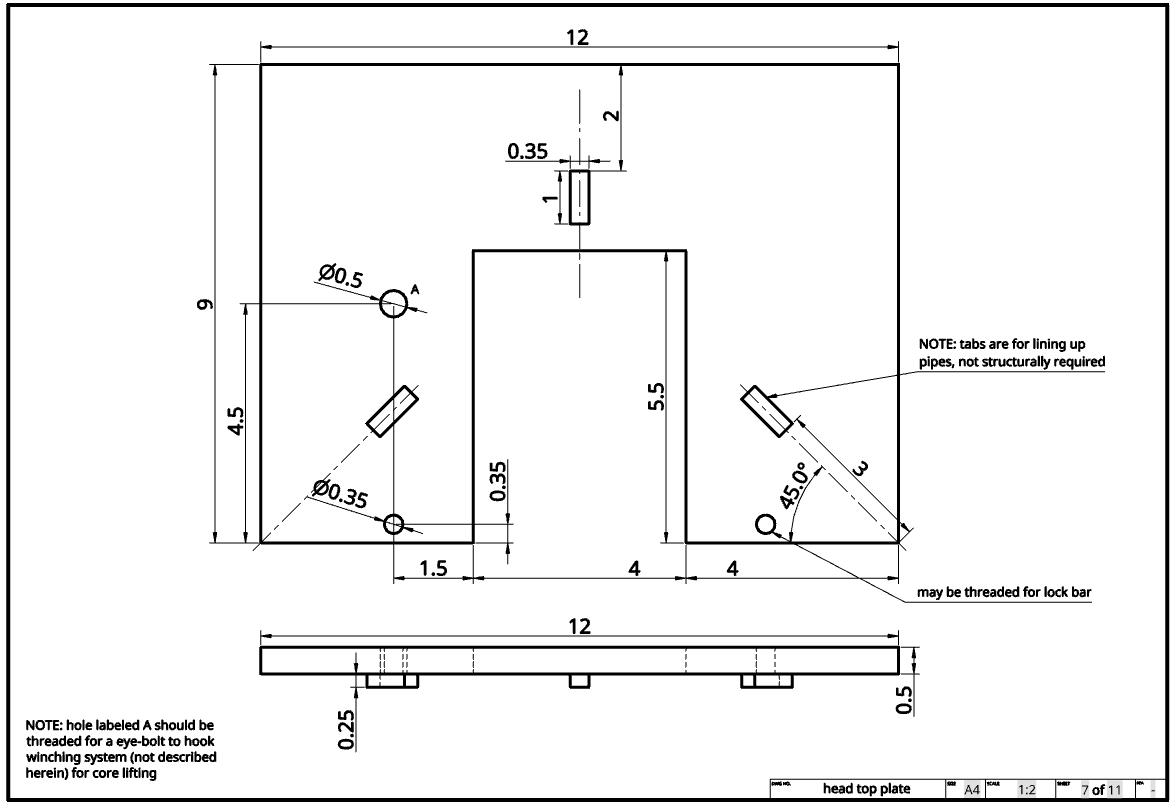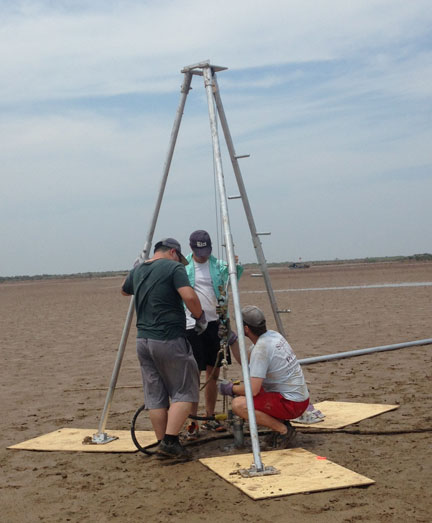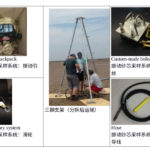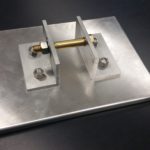Vibracore extraction tripod engineering drawings — Vibracore system
For our research in China, I was charged with building a Vibracore system. The Vibracore works by utilizing a concrete vibrator to rapidly vibrate an upright thin-walled aluminium pipe into the sand/dirt/mud below. A tripod is then set up over the in-ground pipe to pull it up from the ground. The pipe (now called a core I suppose…) is then cut open with a saw and analyzed/sampled.

This system is nothing we invented, although I’m not sure of its origin. I based the design for our tripod on an apparatus that our colleague John Anderson has in his collection of field equipment. Our only substantial modification to the design was to make the legs of our system separable so that instead of a solid 10’ pipes of aluminium, we have two 5’ pipes, joined by a coupler. This is quite useful for us, since we send our system to China each year, and it makes it much easier to handle for shipping.</span>
I recently made some engineering drawings of our system for a colleague and figured I would share them here in case they may be helpful to others. You can find the plans as a .pdf file here, or explore the system in three dimensions in the software they were designed in (OnShape CAD) at this link.


Some more photos





In the future, I hope that my colleague Brandee Carlson (who leads the research using the Vibracore) and I can write a bit of an updated guide to the system based on our experiences using the system in the field, but for now I’ll just leave you with a few references for the system design below.
